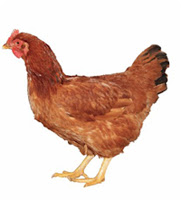How To Vaccinate Poultry Birds
Vaccination is one of the most important program in poultry health management. It contributes immensely to the growth, development and production efficiency of poultry. So, farmers have to pay special attention to the vaccination programme of their birds.
Below are the simple steps of vaccinating your birds effectively.
#1. You have to be sure that your birds are at least 7-10 days old before administering the first vaccine.
#2. The first vaccine is Gumboro. But, some farmers give Lasota first in some cases.
#3. It is advisable to withdraw all water from your birds over the night, if it is of cold weather or early in the morning of vaccination and leave them to only feed for about 2 hours if the weather is hot. This is to make them thirsty for them to quickly finish the vaccinated water you will be giving next.
#4. Mix a small quantity, like a teaspoon, of Cowbell powder milk or any skimmed in 4 litres of drinking water if your birds are within the range of 50 to 100. 8 litres if they are of range 150 to 200 birds and so on. Ensure that the water is close to the brim then stir. You need to increase the volume of water to be used in the next vaccination as the demand for water by your birds must have been increased.
#5. Remove the aluminium seal on the vaccine bottle but do not allow air into the vaccine.
#6. Collect the already mixed water from the drinker into a syringe and transfer it into the vaccine bottle, do not to allow air into the vaccine.
#7. Shake bottle to mix properly and use the syringe to draw out the mixture in the vaccine bottle into the milk solution.
#8. Stir the whole mixture, divide into different drinkers so that it will be easy for birds to access and serve the vaccine water for birds to drink.
#9. Remove vaccine water and replace with clean water (or water mixed with multivitamins) after one and half hours.
#10. You are to vaccinate for birds four times: once a week starting from the first week.
#3. It is advisable to withdraw all water from your birds over the night, if it is of cold weather or early in the morning of vaccination and leave them to only feed for about 2 hours if the weather is hot. This is to make them thirsty for them to quickly finish the vaccinated water you will be giving next.
#4. Mix a small quantity, like a teaspoon, of Cowbell powder milk or any skimmed in 4 litres of drinking water if your birds are within the range of 50 to 100. 8 litres if they are of range 150 to 200 birds and so on. Ensure that the water is close to the brim then stir. You need to increase the volume of water to be used in the next vaccination as the demand for water by your birds must have been increased.
#5. Remove the aluminium seal on the vaccine bottle but do not allow air into the vaccine.
#6. Collect the already mixed water from the drinker into a syringe and transfer it into the vaccine bottle, do not to allow air into the vaccine.
#7. Shake bottle to mix properly and use the syringe to draw out the mixture in the vaccine bottle into the milk solution.
#8. Stir the whole mixture, divide into different drinkers so that it will be easy for birds to access and serve the vaccine water for birds to drink.
#9. Remove vaccine water and replace with clean water (or water mixed with multivitamins) after one and half hours.
#10. You are to vaccinate for birds four times: once a week starting from the first week.
You can alternate Lasota and Gumboro, gumboro in the first two weeks then Lasota in the other two weeks or vice versa, depending on the quantity of birds, weather condition and the exhibiting weight of the birds.
Note that there are dosages for vaccine with respect to the number of your birds: 50 dose for 50 birds, 100 dose for 100 birds, 200 dose for 200 birds and so on.
Although, there are two types of vaccines which are Live and Oil Vaccines. The live vaccines are the common as they are cheaper and easy to administer. However, be sure you get your vaccines from reliable veterinary shops and do not forget to check the expiry date and other details. Also, vaccines are to always remain in cold complex or refrigerator. So, be sure the seller is bringing out the vaccines from a cold complex and also package it for you in a cold complex or ice block. To buy all vaccines at once, make sure to have a means of storing them in cold complex or refrigerator.
Although, there are two types of vaccines which are Live and Oil Vaccines. The live vaccines are the common as they are cheaper and easy to administer. However, be sure you get your vaccines from reliable veterinary shops and do not forget to check the expiry date and other details. Also, vaccines are to always remain in cold complex or refrigerator. So, be sure the seller is bringing out the vaccines from a cold complex and also package it for you in a cold complex or ice block. To buy all vaccines at once, make sure to have a means of storing them in cold complex or refrigerator.
For quick updates and comments, follow us on our social media connects; FacebookPage, TwitterHandle and Instagram. You can also subscribe and watch videos on our YouTube channel. At Artib Farm, we materialize your satisfaction!




Comments
Post a Comment